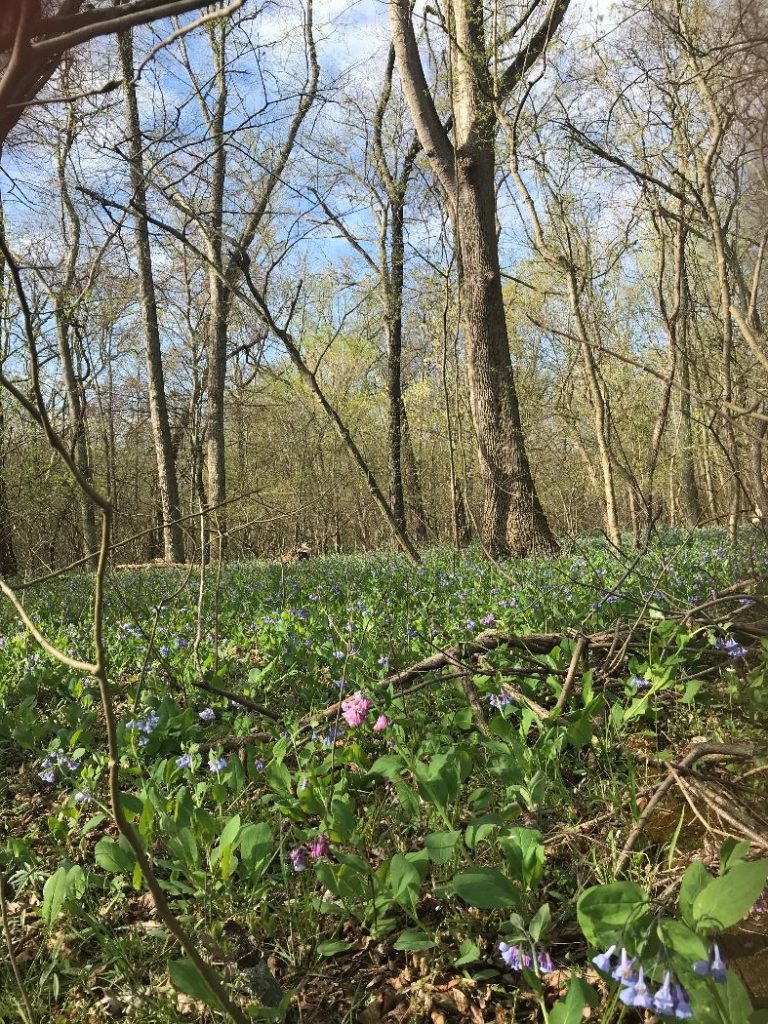Native Plant Profile: Virginia Bluebell
“Where flowers bloom, so does hope.” ~Lady Bird Johnson
It’s that time of year, when winter’s darkness is gradually traded for spring’s warming light, and when drab grays and browns are suddenly punctuated by the first pops of color. Spring may be a bit earlier than usual this year, but that means we get to greet our early spring bloomers just a little bit sooner!
Virginia bluebells (Mertensia virginica), also known regionally as Virginia cowslip, Roanoke bells, and lungwort oysterleaves, is a native spring ephemeral that blooms for about 3-4 weeks in March or April. Spring ephemerals are a unique group of plants that have evolved to take advantage of a very specific time period between the most frigid weather and when the trees above them fully leaf out. This gives them the great advantage of more light and the exclusive attention of hungry pollinators, but often means they don’t last long. Other familiar Maryland spring ephemerals include mayapple (Podophyllum peltatum), spring beauty (Claytonia virginica), and dutchman’s breeches (Dicentra cucullaria). Bluebells’ delicate blossoms vary in color from pinks to deep blues as they age, making a spectacular show where they are found in large groups. They rely on pollinators for reproduction; with a bell-shaped flower, they are favorites of butterflies, long-tongued bees, and hummingbirds.
Susquehanna State Park boasts locations for viewing these beauties in vast groups – if you’ve never experienced a nature-made carpet of lush blues and greens as far as you can see in every direction, head out there this spring! Please, proceed with caution. Practice Leave No Trace ethics when visiting, as litter, flower-picking, and off-trail foot traffic can cause severe damage to these local treasures. Introduction of invasive species like lesser celandine (Ficaria verna) can be devastating, wiping out entire populations in the span of just a few years. If you find yourself in love with this perennial as much as we are, you can easily plant it in your own garden – provided you have full to part shade and moist soil. Their short lifespan above ground means gardeners can also overplant with shallow-rooted annuals after the bluebell foliage has died back, or interplant with slower growing summertime species like ferns or Solomon’s seal. As an added bonus, they can be used as a ground cover in dense clumps, and they are deer-resistant.
Spring is here, HabiChatters!
In this issue, you’ll find a native plant and native animal profile about some of the first (and best) harbingers of spring. Education Assistant Edwin Guevara offers some ways to get your teens into nature with technology; if you can’t get them off their screens, bring the screens outside! And last but not least, guest author Samantha Lott, one of our fantastic Natural Resources Technicians, offers us great insight and advice about dealing with the consequences of heavy spring rains. We hope you get outside as the weather warms up in your Wild Acres!
Sarah Witcher
Sarah.Witcher1@Maryland.gov
410-260-8566
Click here to have HabiChat—the quarterly backyard wildlife habitat newsletter from the Wild Acres program—delivered right to your inbox!
In this Issue




 1-888-373-7888
1-888-373-7888 233733
233733